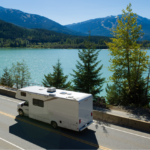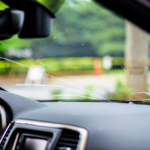Albert Einstein famously stated, ‘Knowing is not enough; we must understand.’ While he might not have been referring to car insurance, this is an aspect that many drivers are aware they require, yet lack a comprehensive understanding of its importance and appropriate coverage options. When seeking auto insurance, it is crucial to take into account various factors to ensure an informed decision that suits both your needs and budget. However, it is generally unwise to go without it, as the aftermath of a car accident can be financially burdensome and time-consuming. To make the optimal choices, it is essential to grasp the functioning of deductibles, the different types of car insurance coverage, and what each type covers.
Car insurance policies are comprised of various coverages that lend financial protection in case of loss involving the policyholder’s vehicle. The type of car you drive, where you live, and other insurance policies you have are all variables to consider when shopping for the best automobile insurance policy. Depending on the state in which you live, some coverages are mandatory, and others are optional.
Here are some of the more common coverage types, what they cover, and how they work.
Liability Insurance
Liability insurance covers you if you’re legally at fault for injuries and property damage to others after a car accident. This type of coverage pays for other people’s expenses but not any damages to you or your vehicle. Liability coverage covers the cost of repairing property damage and medical bills caused by accidents. Most states require liability coverage, although minimum requirements vary. If you’re at fault and damages exceed the amount on the policy, you’re required to pay for costs that exceed the coverage’s upper limit.
Collision Insurance
Collision insurance covers damages to your car in accidents with other vehicles or objects, such as fences, light posts, and the like, regardless of fault. Leased or financed vehicles usually required collision coverage. Naturally, these companies are protecting what they own. For newer cars or cars with costly repairs, it might make sense to purchase collision insurance. It may not be necessary for older cars or cars with a lower value.
Comprehensive Insurance
Comprehensive insurance can serve as an extra level of protection, picking up the slack where collision insurance drops off. Suppose, for example, your car incurs damages from incidents such as weather events, vandalism, accidents with animals, or civil disturbances. In that case, comprehensive coverage helps pay for repairs to your car. Consider such factors as where you live and park; a hail storm may be more likely than a collision. Although this type of coverage can be costly, it’s often required for drivers who have a car loan or lease.
Uninsured and Underinsured Motorist Insurance
Most states require drivers to have some type of car insurance to get on the road. However, the unfortunate reality is that not all motorists play by the rules. Uninsured motorist insurance helps cover damages to you or your vehicle if you get into an accident with an uninsured driver. Underinsured motorist coverage serves as a safety net to cover damages when a driver who’s at fault has insurance that isn’t enough to cover the costs of an accident. These types of coverage are required in some but not all states. Since it’s usually an inexpensive addition to a policy, it’s a good idea to purchase uninsured and underinsured motorist insurance.
Personal Injury Protection Insurance
Personal injury protection (PIP) insurance helps cover your and your passengers’ direct and indirect medical expenses after a covered accident. Although not available in all states, qualifying expenses may include medical bills, lost income, childcare, or even funeral expenses. No-fault states require PIP insurance. But even if your state does not require it, it can protect policyholders from hefty medical bills.
Medical Payments Insurance
Medical payments insurance is similar to PIP insurance, but there’s a key difference to keep in mind. PIP insurance covers other costs in addition to medical expenses. While medical payments insurance solely pays medical expenses related to the covered accident for you and your passengers, regardless of who’s at fault.
Though these are the most common types of auto insurance, other coverages are good to have in emergencies, such as gap insurance, rental reimbursement, emergency roadside assistance, and mechanical breakdown insurance.
How do you determine what types of coverage you need? Which types of auto insurance does your state require? What can you do to save money while still having the right coverage for your needs?
Navigating the auto insurance space and finding the answers to these questions can be challenging if you’re doing it alone. Contact us today to learn more about the different types of car insurance coverage available. Let us help you secure a policy that fits your specific needs.









